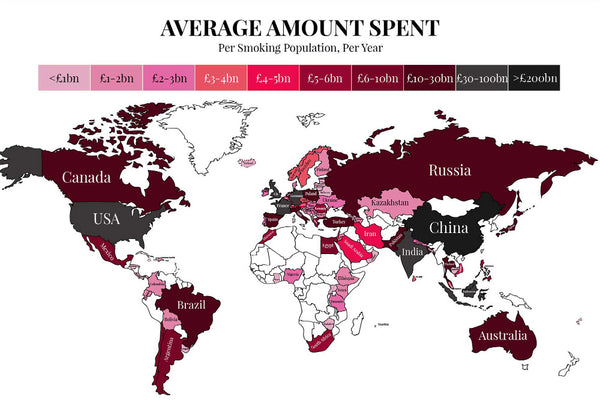Soy Wax Candles vs. Paraffin Candles

At The Bird Box we pride ourselves on only using sustainable soy wax unlike 95% of the candles produced by other brands. So why is soy better than paraffin wax you ask? Well, let’s take a look.
Practical Benefits
Firstly, soy wax has a 50% longer burn time than paraffin because it has a cooler ‘burn pool’. This means takes longer to evaporate, and fans of scented candles get to enjoy their product for much longer. It also means if you have any accidents, you’ll be less likely to suffer from significant burns, as the wax doesn’t get as hot. Soy wax is also washable with soap and water, so if you get wax on the carpet, give it a good scrub and it will come right out.
Soy wax has a strong and pure scent flow meaning it will fill the room with a longer lasting scent. This is again because of the lower melting point of the candle, which results in a larger pool of wax around the wick where the essential oils evaporate.
Environmental Benefits of Using Soy
Soy wax is made from the oil of soybeans. After soybeans are harvested, they are cleaned, cracked, de-hulled and rolled into flakes. The oil is then extracted from the flakes and hydrogenated to become wax.
The soy wax we use at the Bird Box is sourced from soybeans grown in U.S. farms only, which means no rainforest has been cleared to grow the crops. It’s also deemed ‘renewable’ as many soybean varieties reach maturity between 90 to 150 days from planting, so soy crops used to create our candles are replenished relatively quickly. As an added bonus, soy wax is also biodegradable!
If possible, when buying soy products check to see if they have originated from sustainable sources, as not all soy products are sustainable.
Paraffin Wax is Bad for the Environment
Paraffin wax comes from fossil fuels such as petroleum, coal or oil shale meaning it is not renewable and it produces CO2 which causes climate change. Paraffin wax is created through the refining process of crude oil. Mineral wax is another by-product of petroleum. One of the main substances that is created when crude oil is refined is lubricating oil which is what paraffin wax derives from. This refining process is highly carbon intensive and oil refineries alone produce 182 million metric tonnes of CO2 in each year, and that’s just in the United States. And once the candles are created, burning one paraffin wax candle produces almost 11g CO2 every hour. On top of this, they also produce a lot of soot when they’re burned, whereas soy candles produce 90% less soot.
Indoor Air Pollution
So we now know that paraffin candles are bad for the environment, but what does it mean for your home environment? If you’re burning paraffin candles on a regular basis in an enclosed space with poor ventilation this could be harming your health. In 2004 researchers from Maastricht University discovered levels of polycyclic hydrocarbons, which are considered to be potentially carcinogenic, in churches that exceeded levels measured next to main roads. The cause of this pollution was none other than the church candles!
In addition to paraffin candles, if you’re burning candles with metal-based wicks, they could contain lead. Candles with lead-core wicks release five times the amount of lead considered to be dangerous for children. To ensure the candles you’re buying don’t contain lead in their wicks, always check the labels to see if they’re lead-free. If you have just bought a candle and aren’t sure whether the wick contains lead, rub the tip of the wick on a piece of paper. If it leaves a gray mark, like a pencil, the wick contains a lead core. Thankfully we only use cotton wicks at The Bird Box!
And the other biggest contributor to indoor pollution is the use of synthetic fragrances in scented candles. The dangers of which were covered in our Essential Oils Vs. Synthetic Fragrances blog post.
Health Risks Associated With Paraffin Candles
Paraffin is non-toxic in its solid state, but when burning paraffin candles, the fumes can cause discomfort and nausea and the National Institute for Occupational Safety and Health in America recommend limiting worker exposure to paraffin fumes to 2mg/m3 over an 8-hour workday.
A study conducted by researchers at South Carolina State University found that paraffin candles emitted toxic chemicals like toluene and benzene whereas alternatives such as soy and beeswax candles didn’t. When inhaled, toluene can irritate your eyes, throat and lungs. According to the UK government website, toluene can also cause drowsiness, dizziness, headache, sickness and even memory problems. Benzene is an even nastier chemical that is known to cause cancer.
Both toluene and benzene have also been linked to asthma attacks.
It’s a minefield out there, but now you see why we only use soy wax candles with 100% pure essential oils at The Bird Box!


